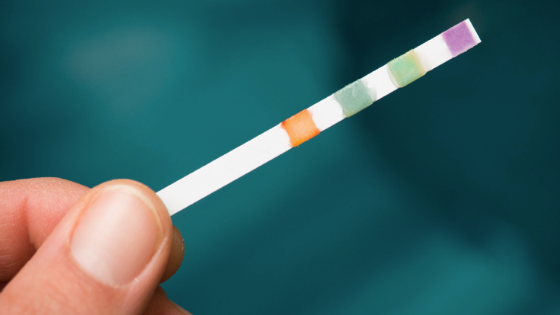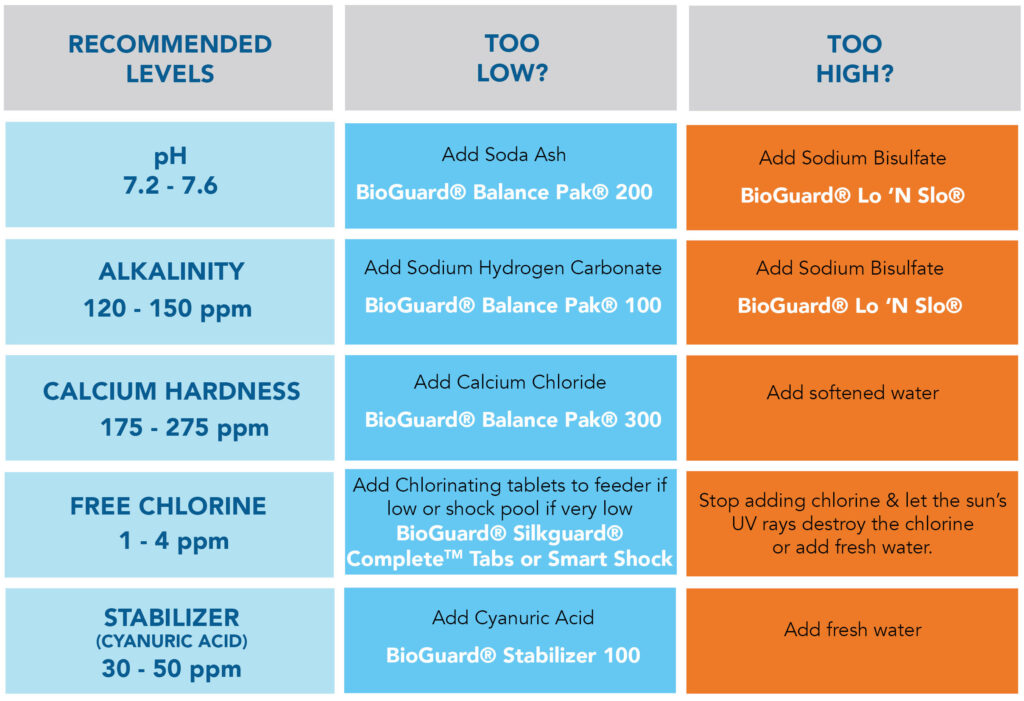The dream has been playing in your head for as long as you can remember: Kids laughing, wet feet on the warm concrete, music playing, the ricochet of the diving board, and the inevitable cannonball SPLASH! You’re finally a pool owner! How exciting!
…Now, how do you maintain the pool water balance without a degree in Chemistry?
Let us break down this complex balancing act into simple steps to maintain your pool’s water, so that you and your family never miss a day of fun in your pool.
You can find any of the products mentioned here at the Zagers store nearest you.
Weekly Basic Pool Care (Chlorine Pool)
STEP 1 Sanitizer: Ensure the proper amount of chlorine tablets are in your feeder or skimmer. The BioGuard SilkGuard Complete chlorinating products recommend 16 ounces per 10,000 gallons.
STEP 2 Shock: Once a week, with the pump running, scatter shock into the pool. Shock is best used when the sun is down to prevent UV rays from reducing free chlorine levels. BioGuard Smart Shock recommends 1 pound per 10,000 gallons—and no pre-mixing. You can go back to swimming in 15 minutes!
STEP 3 Algaecide: Once a week, the morning after you shock, follow up with an algaecide to kill any existing algae and prevent future growth. BioGuard Back Up 2 or Algae Complete are great choices. Only a few ounces are needed per 10,000 gallons, once you have added the initial dosage to your pool. See the bottle for instructions.

Recommended Water Testing Levels
Depending on usage, you’ll want to test your pool water a few times a week.
For Balanced Water
These 3 measurements are needed to ensure your water is balanced:
Alkalinity: 120 – 150 ppm
- Tip: Always adjust Alkalinity before pH.
- If Alkalinity is too low, the pH can fluctuate rapidly.
- If Alkalinity is too high, the pH can be hard to adjust and causes cloudiness.
pH: 7.2 – 7.6
- If pH is too low, the water is very acidic and can damage equipment and the liner.
- If pH is too high, the water can become cloudy, and the chlorine will not work effectively. A high pH level can cause eye irritation and give off a strong chlorine smell.
Calcium Hardness: 175 – 275 ppm
- Tip: Adjust Calcium Hardness level last. This can be tested less frequently, about once a month.
- If Calcium Hardness is too low the water can become aggressive and will seek out a calcium source by corroding grout, concrete, or masonry to name a few.
- If Calcium Hardness is too high, it can cause cloudy pool water—as well as scale forming on the walls, pipes and mechanical equipment.
-
For Sanitized Water
These 2 measurements ensure that your pool water is being properly sanitized:
Free Chlorine: 1 – 4 ppm if using the BioGuard 3 step process
- If Chlorine is too low the pH can fluctuate rapidly.
- If Chlorine is too high can cause skin irritation, aggravate asthma and lower the pH of the water making it very acidic and corrosive to the liner and equipment.
Stabilizer (Cyanuric Acid): 30 – 50 ppm
- If Cyanuric Acid is too low, it can’t stabilize chlorine by preventing sunlight from breaking down the chlorine.
- If Cyanuric Acid is too high, it can block chlorine—making it ineffective.
Refer to the following chart for recommended products that can help you quickly and easily adjust levels.

Remember, you do not have to be alone in ensuring proper water balance and chlorination for your pool! Zagers is here to guide you through with free water testing at any of our 4 locations. Also, you can have Zagers take care of your pool by using our weekly pool maintenance program (in-ground pools only).
So, put down the books; there is no need for a degree in Chemistry. But get going on dialing in those levels—you do need to master your cannonball!